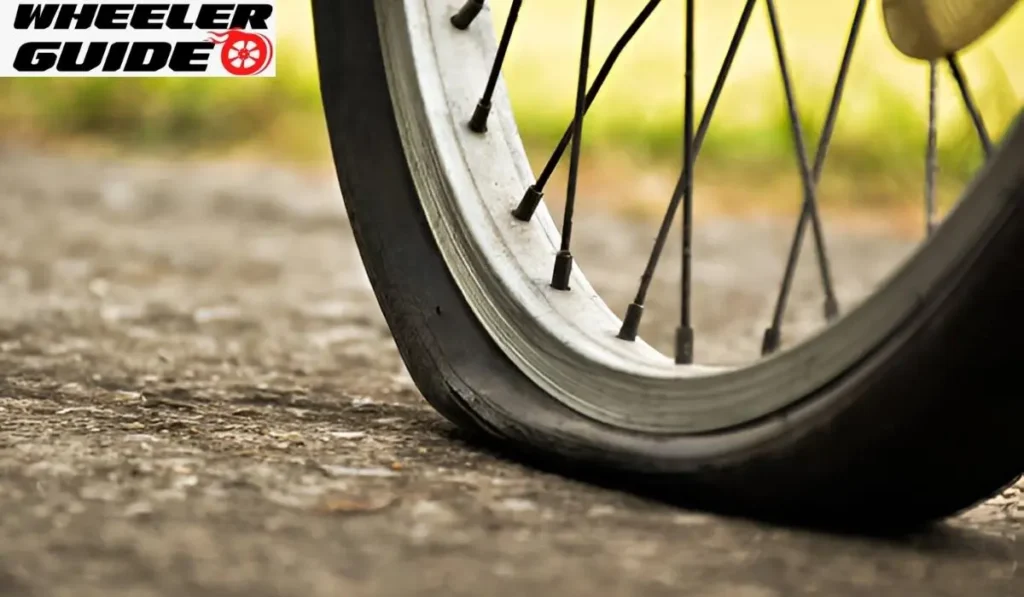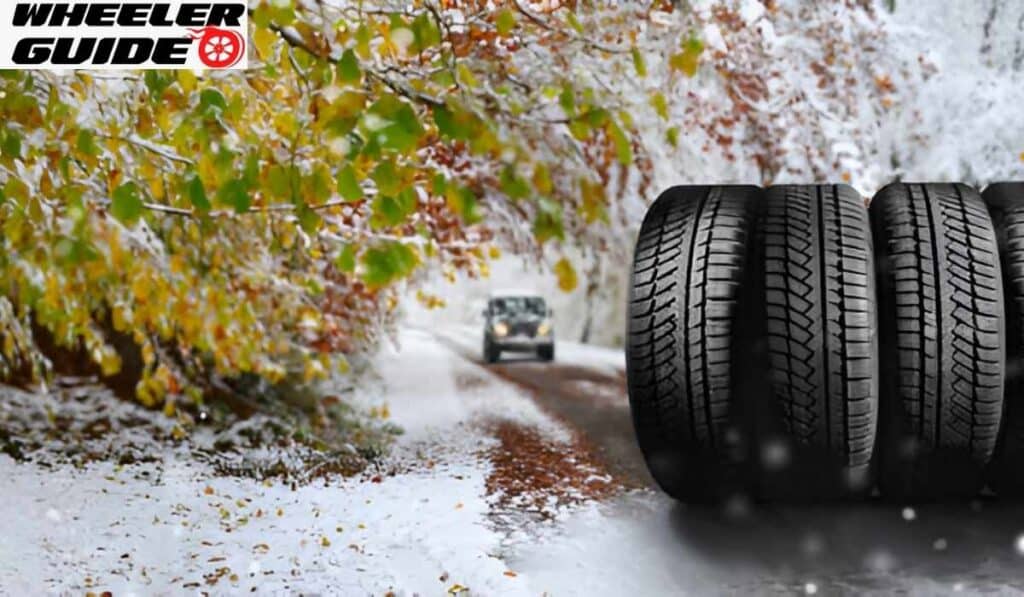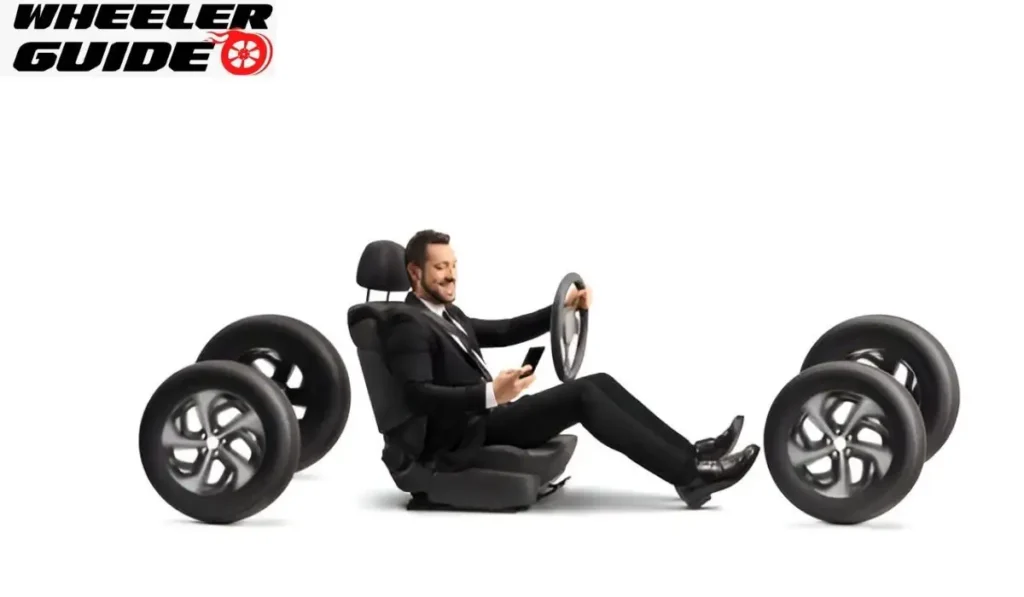Flat tires can be a real hassle for cyclists. Many riders wonder if they can keep pedaling when their tire loses air. You can ride a bike with a flat tire, but it’s not a good idea. Doing so can cause damage to your bike and put you at risk.
Riding on a flat tire makes cycling much harder. The bike becomes unstable and difficult to control. Some people think they can just ride on the rim, but this can ruin the wheel. It may also damage the tire beyond repair.
There are better options than risking injury or expensive repairs. Bringing a repair kit on rides helps fix flats quickly. Learning basic tire-changing skills is smart for all cyclists. For those who hate flats, some companies even make puncture-resistant tires that are less likely to go flat.
- Why Shouldn't You Ride With A Flat Tire
- What Causes a Flat Tire in Bicycles?
- Consequences of Riding with a Flat Tire
- Can You Ride Short Distances with a Flat Tire?
- Step-by-Step Guide: What to Do When You Have a Flat Tire
- How to Temporarily Fix a Flat Tire While Riding
- Preventive Measures to Avoid Flat Tires
- Flat Tire Repair Kits and Tools Every Cyclist Should Carry
- Safety Tips for Riding with a Partially Flat Tire
- Frequently Asked Questions
Why Shouldn’t You Ride With A Flat Tire
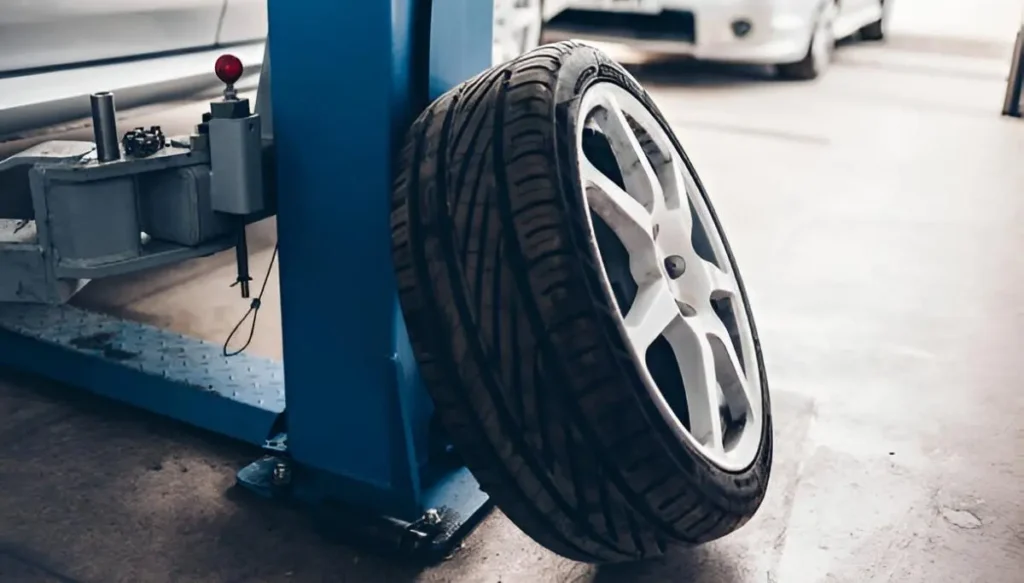
1. Increased Risk of Rim Damage
Riding on a flat tire can cause serious damage to the bike. Without proper tire inflation, the metal rim is exposed. This lack of air cushioning leads to direct contact with the ground, increasing the risk of bent or cracked rims, which are expensive to repair or replace.
2. Difficulty in Handling and Steering
Riding with a flat tire is difficult. The bike becomes harder to control and steer due to the lack of air pressure. This reduced control makes it challenging to maneuver, especially at higher speeds or on uneven terrains, increasing the likelihood of accidents and falls.
3. Prone to Additional Punctures
Flat tires are more prone to additional punctures. When riding with insufficient air, the tire’s inner tube is exposed to road debris, which can lead to more punctures and damage over time, making the flat tire situation worse.
4. Requires More Effort to Pedal
Cycling with a flat tire requires more effort. The rider has to pedal harder to maintain speed, which increases the physical strain. This extra exertion can lead to muscle fatigue and make the ride unnecessarily exhausting.
5. Potential Damage to Inner Tube
Riding on a flat tire puts the inner tube at high risk of damage. The lack of air pressure causes the tube to rub against the rim and other components, which can lead to unrepairable damage, making it essential to fix the flat tire as soon as possible.
6. Increased Risk of Accidents
The difficulty in handling and lack of stability increases the risk of accidents. A flat tire compromises the bike’s balance, making it easier to lose control and fall, putting both the rider and the bike at risk of injury or damage.
7. Higher Chance of Tire Detachment
Riding with a flat tire increases the chances of tire detachment from the rim. The loose fit and reduced air pressure cause the tire to separate from the rim, especially when turning or riding over bumps, leading to potential accidents.
8. Increased Muscle Strain and Fatigue
With a flat tire, cycling demands much more energy. The rider must exert extra force to move forward, which can cause muscle strain and fatigue, especially over long distances, making the ride far less enjoyable and potentially harmful to the cyclist’s health.
What Causes a Flat Tire in Bicycles?
Sharp Objects
Flat tires are a common problem for cyclists. They can happen unexpectedly and ruin a good ride. Sharp objects on the road are a major culprit. Nails, glass shards, and thorns can puncture bike tires. These small items are often hard to spot while riding.
Tire Pressure
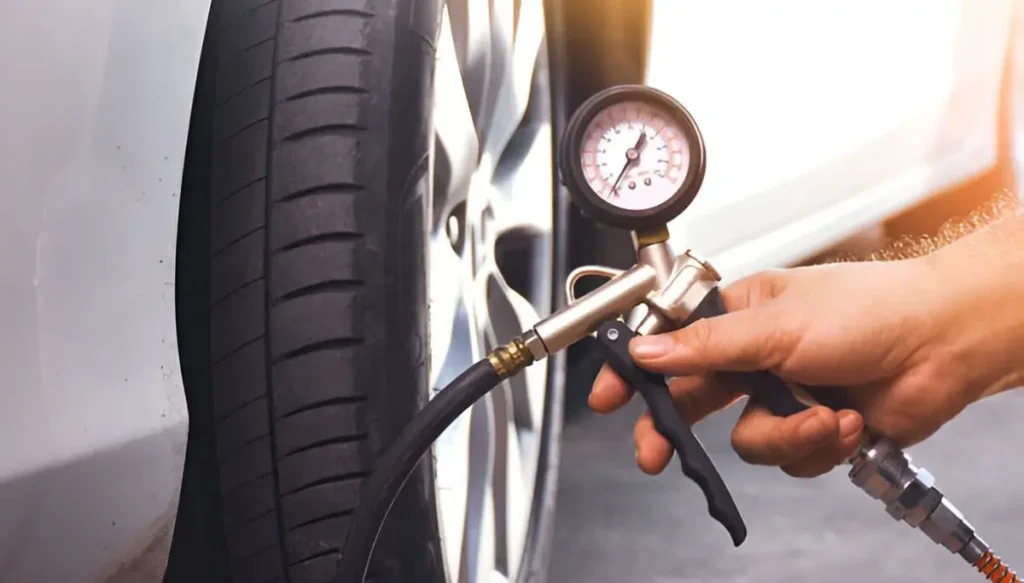
Tire pressure plays a big role in causing flat tires. Overinflated tires are more likely to burst, while underinflated tires can lead to pinch flats when hitting bumps or curbs.
Wear and Tear
Wear and tear is another factor in flat tires. Old, worn-out tires are more prone to flats because they have less rubber to protect against punctures.
Valve Stem Issues
Valve stem issues can cause slow leaks, leading to flat tires. A faulty valve may not hold air properly, resulting in gradual deflation over time.
Rim Problems
Rim problems can also cause flats. Damaged or defective rims might have sharp edges that cut into the tire, increasing the risk of flat tires.
Regular bike maintenance helps prevent many of these issues. Checking tire pressure, inspecting for wear, and avoiding road debris can reduce flat tire risks.
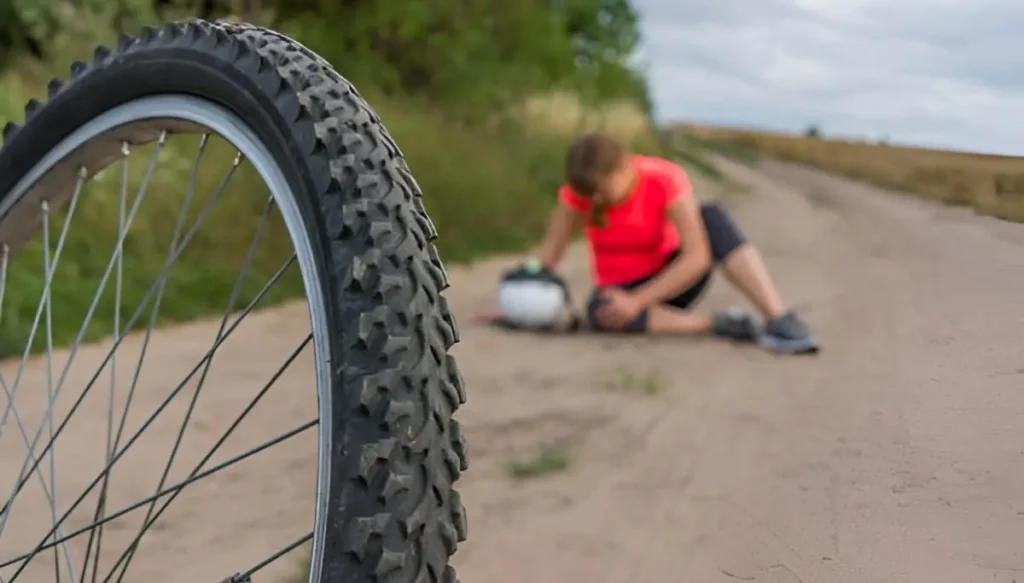
Consequences of Riding with a Flat Tire
Riding a bike with a flat tire can lead to serious damage and safety issues. The risks extend beyond just the tire itself.
Mechanical Damage Caused by Riding on a Flat Tire
Riding on a flat tire can harm multiple bike components. The rim takes the brunt of the damage. Without proper air cushioning, the metal rim grinds directly against the road surface. This grinding can bend or crack the rim, making it unsafe to use. The spokes may also loosen or break due to uneven pressure. The tire itself suffers too. The rubber can tear or separate from the rim. Inner tubes often get pinched and punctured beyond repair.
Other parts at risk include:
- Wheel bearings
- Brake systems
- Frame alignment
These issues can be costly to fix. In some cases, entire wheel replacement becomes necessary.
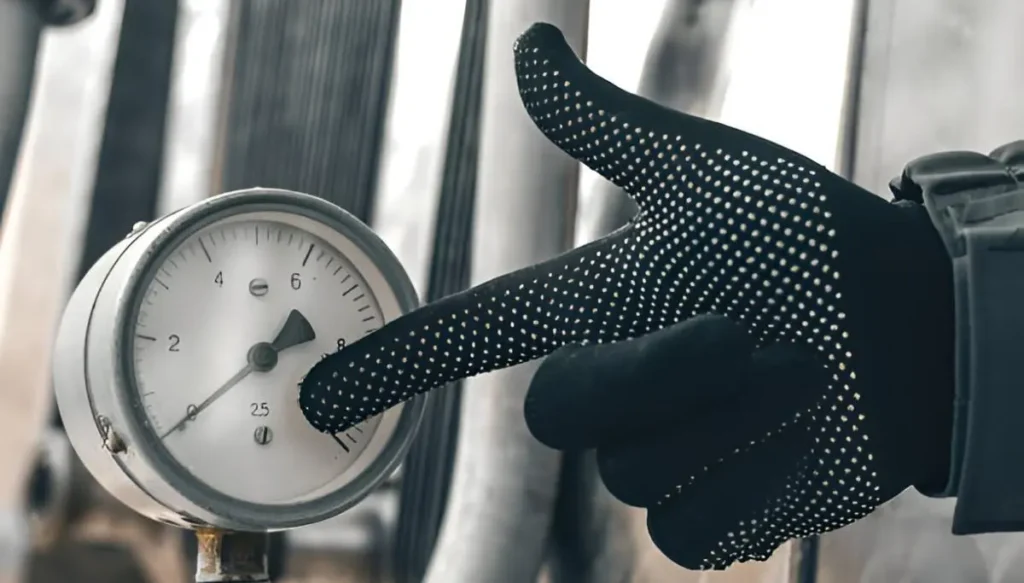
Riding with Low Air Pressure: Is It Safe?
Even slightly underinflated tires pose risks. Low pressure makes the bike harder to control. It increases the chance of accidents, especially when turning or braking. Tire wear increases dramatically with low pressure. The sides of the tire rub against the road more than usual. This can lead to blowouts or sudden flats.
Fuel efficiency drops too. A bike with soft tires requires more effort to pedal. This makes rides more tiring and less enjoyable. For safety, always check tire pressure before rides. Carry a portable pump for emergencies. If a tire goes flat, it’s best to walk the bike to avoid further damage.
Can You Ride Short Distances with a Flat Tire?
Riding with a flat tire is risky and can damage your bike. It’s best to avoid it when possible. There are a few rare situations where you may need to ride a short distance on a flat.
When Is It Safe to Continue Riding with a Flat Tire?
Generally, it’s not safe to ride on a flat tire. But in emergencies, you may need to travel a very short distance. Riding even a short distance on a flat can damage the rim and tire. Only ride if you have no other option.
Situations where you may need to ride briefly on a flat:
• To get off a busy road
• To reach a safe place to fix the tire
• When you’re close to your destination
Keep the ride as short as possible. Go slow and avoid sharp turns. Stop as soon as you can safely do so. Walk your bike if possible instead of riding.
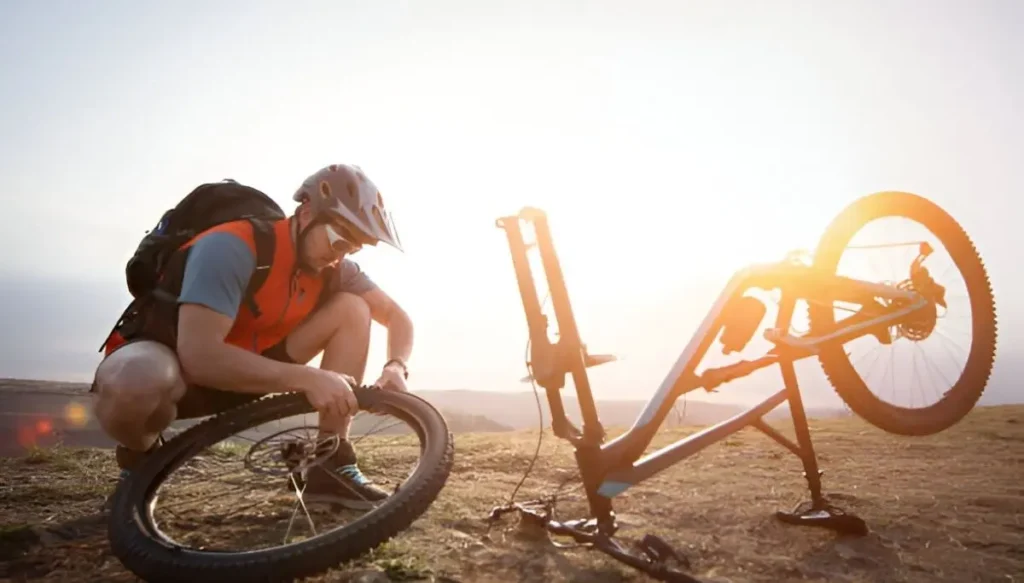
Effects of Flat Tires on Bicycle Stability and Control
A flat tire greatly reduces bike stability and control. Riding becomes difficult as the tire no longer cushions bumps. The bike may pull to one side. Steering becomes less responsive.
Key effects on handling:
• Reduced traction
• Increased risk of falling
• Harder to balance, especially at low speeds
• More effort is needed to pedal
The bike’s rim is exposed without the tire’s protection. This can lead to bent or cracked rims. Braking becomes less effective. Overall, flat tires make bikes unsafe and hard to control.
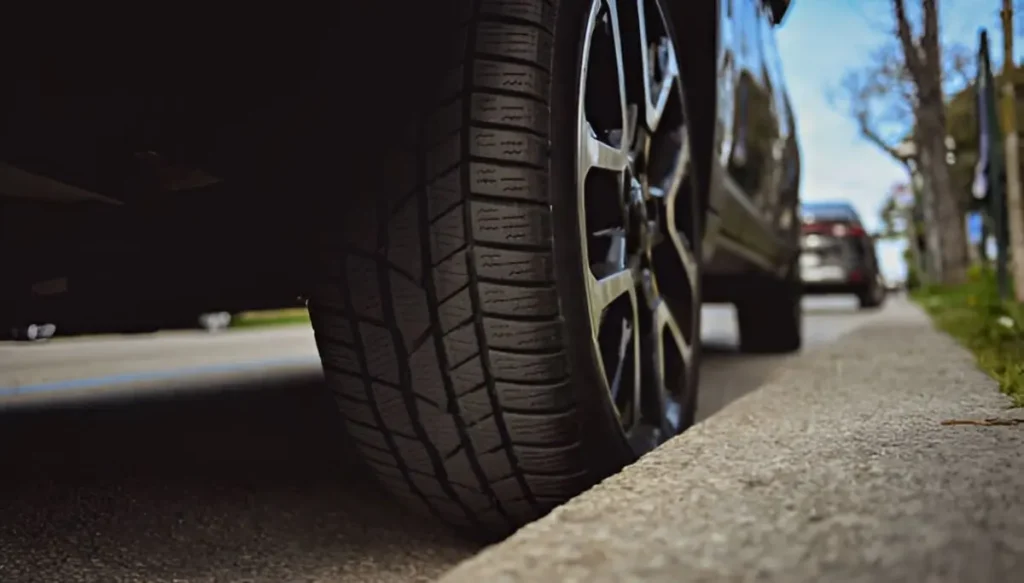
Step-by-Step Guide: What to Do When You Have a Flat Tire
When a cyclist encounters a flat tire, they should first stop in a safe spot away from traffic. Safety is the top priority. Next, they should check the tire for visible damage or punctures. This helps determine if a quick fix is possible.
If the damage is minor, the rider can attempt a temporary repair. They’ll need to:
- Remove the wheel from the bike
- Take off the tire and inner tube
- Locate the puncture
- Patch the hole or replace the tube
- Reassemble everything
For more serious damage, it’s best to seek help. The cyclist can:
- Call a friend for a ride
- Use a ride-sharing app
- Walk the bike to a nearby bike shop
If continuing the ride is necessary, inflating the tire might provide a short-term solution. This only works for slow leaks. Remember, riding on a completely flat tire can damage the wheel rim. It’s usually safer to walk the bike if no repair is possible.

How to Temporarily Fix a Flat Tire While Riding
Fixing a flat tire while on a bike ride can be challenging, but some quick solutions can get you back on the road. These methods are temporary and should be followed up with proper repairs as soon as possible.
Emergency Solutions for Fixing a Flat Tire on the Go
When faced with a flat tire during a ride, cyclists have a few options for temporary fixes. One method is to use a tire patch kit. This involves locating the puncture, cleaning the area, and applying a self-adhesive patch. Another option is to carry a spare inner tube. Replacing the damaged tube with a new one is often quicker than patching. Cyclists should practice changing tubes at home to be prepared for roadside repairs. For tubeless tires, carrying a tubeless tire plug kit can be helpful. These kits allow riders to insert a small plug into the puncture, sealing it temporarily.
In extreme cases, stuffing the tire with leaves or grass can provide enough cushioning to ride slowly to a safe location. This method should only be used as a last resort. It’s crucial to carry essential tools like tire levers, a pump, and patches on every ride. Being prepared can turn a potential ride-ending flat into a minor inconvenience.
Preventive Measures to Avoid Flat Tires
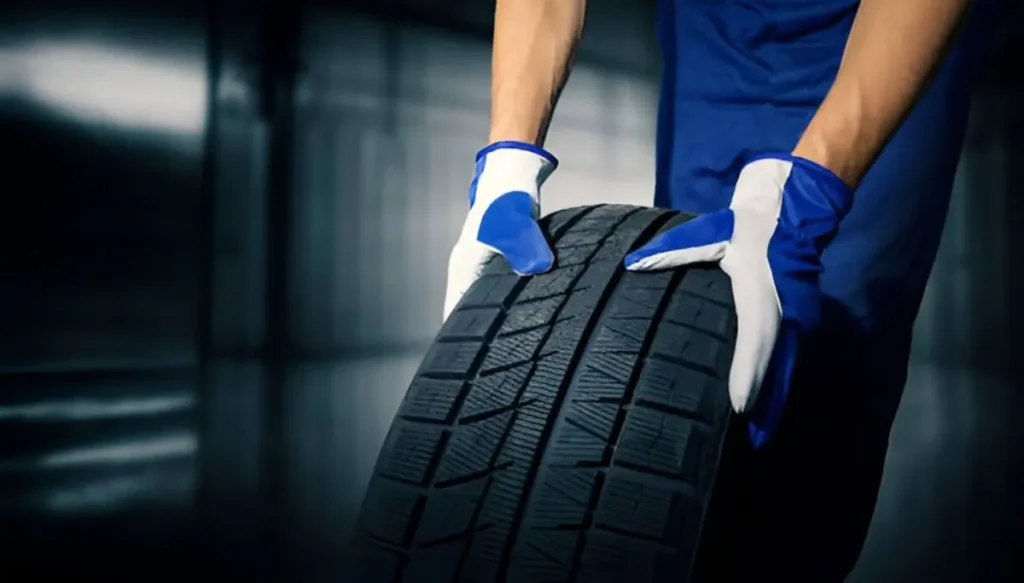
Tire Maintenance
Cyclists can take several steps to prevent flat tires. Regular tire maintenance is key. Before each ride, riders should check their tire pressure and look for any damage.
Proper Tire Pressure
Proper tire pressure is crucial. Road bike tires typically need 100-140 PSI. Mountain bike tires work best with 30-50 PSI. City and casual bike tires usually require 60-80 PSI. Keeping tires inflated correctly reduces the risk of pinch flats. These happen when the tube gets caught between the rim and the tire.
Inspecting Tires for Debris
Inspecting tires for debris like glass or thorns can prevent punctures. Small objects can work their way into the tire over time, leading to flats.
High-Quality, Puncture-Resistant Tires
High-quality, puncture-resistant tires offer extra protection. These tires have an added layer to stop sharp objects from reaching the tube.
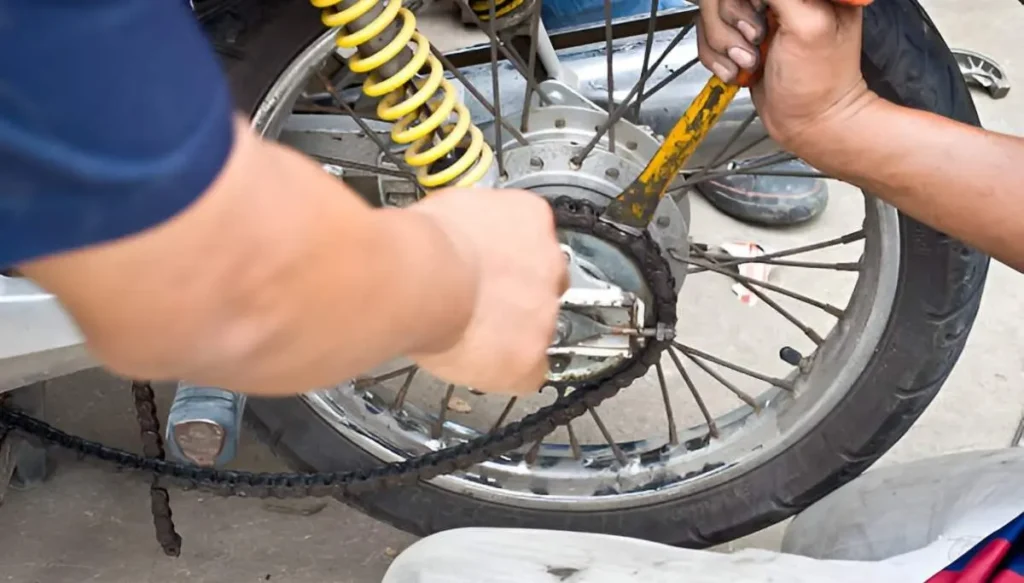
Regular Bike Maintenance
Regular bike maintenance helps spot potential issues early. Cyclists should check their tires after rides too, especially if they go over rough terrain.
By following these tips, riders can greatly reduce their chances of getting a flat tire during their next cycling adventure.
Flat Tire Repair Kits and Tools Every Cyclist Should Carry
Cyclists should always be prepared for flat tires. A basic repair kit is essential for every ride.
The most important items to carry are:
- Spare tube and/or patch kit
- Tire levers (at least 2)
- Mini pump or CO2 inflator
Patch kits are great for small punctures. They’re lightweight and take up little space. For larger holes, a spare tube is needed. Tire levers help remove stubborn tires from rims. Plastic levers are lightweight and won’t damage rims. A mini pump allows for infinite air but takes more effort. CO2 inflators are faster but have limited uses.
Road cyclists often prefer CO2 for speed. Mountain bikers may choose mini pumps for reliability on long rides. Hybrid riders can choose based on their typical ride length and terrain. A small multi-tool with hex wrenches is also useful for minor adjustments on the go. Carrying these items in a small saddle bag or frame bag keeps them organized and easily accessible. With the right tools, most cyclists can handle common flats and get back to riding quickly.
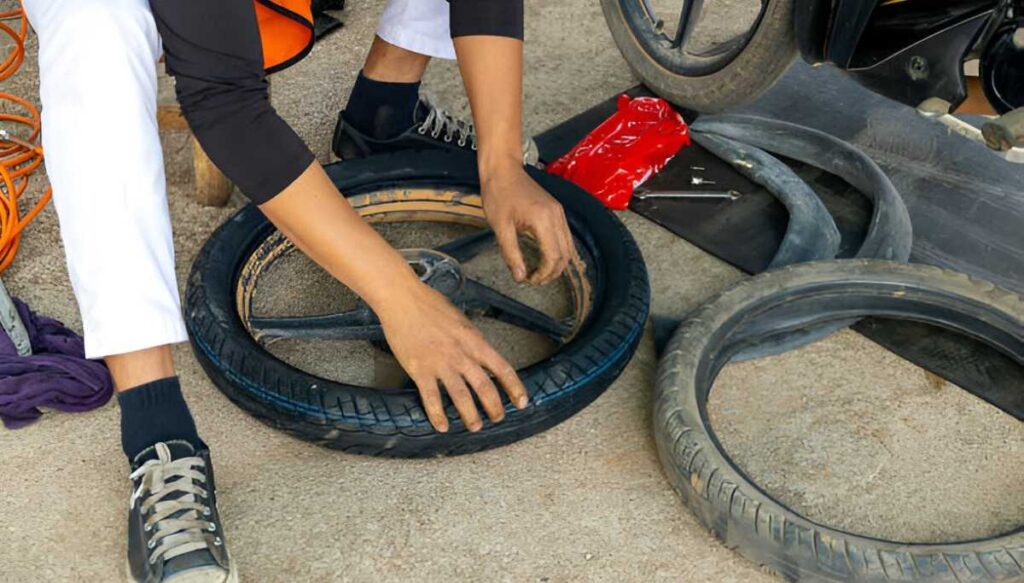
Safety Tips for Riding with a Partially Flat Tire
Reduce Speed
Reduce speed immediately. A slower pace helps maintain control and reduces the risk of accidents.
Increase Caution
Increase caution while riding. Stay alert and watch for obstacles or uneven surfaces to prevent further instability.
Avoid Rough Terrain
Avoid rough terrain. Stick to smooth, flat roads to minimize further tire damage and maintain stability.
Skip High-Speed Turns
Skip high-speed turns. Cornering becomes more difficult with a partially flat tire, so take turns slowly and carefully.
Keep Weight Balanced
Keep weight balanced. Distribute your weight evenly to maintain stability while riding.
Check Tire Pressure Frequently
Check tire pressure frequently. Stop regularly to assess if the tire is losing more air and determine whether it’s safe to continue.
Plan a Safe Route Home
Plan a safe route home. Choose the shortest, safest path to end the ride as quickly as possible.
Be Prepared to Walk
Be prepared to walk. If the tire becomes fully flat, walking the bike is the safest option to avoid damage and injury.
Frequently Asked Questions
Riding a bike with a flat tire can lead to various problems and safety risks. It’s important to understand the consequences and proper actions to take in such situations.
Why is it not advisable to ride a bicycle with a flat tire?
Riding with a flat tire makes cycling difficult and can damage your bike. The lack of air in the tire affects the bike’s performance and stability.
It also puts extra stress on the wheel and rim, potentially causing costly damage.
What are the effects of riding a bike with low tire pressure?
Low tire pressure reduces traction and control. This can make steering and braking harder, increasing the risk of accidents. It also makes pedalling more difficult, requiring more effort to maintain speed.
What immediate steps should be taken when your bike tire goes flat during a ride?
Stop riding immediately when you notice a flat tire. Walk your bike to a safe area off the road. Inspect the tire for punctures or damage. If possible, repair the flat using a spare tube or patch kit.
Can cycling on a flat tire cause damage to the bike?
Yes, riding on a flat tire can damage your bike. It puts stress on the wheel rim, potentially causing bends or cracks. The tire itself can also be damaged beyond repair if ridden on while flat.
What risks are involved in riding a bike with a flat tire?
Riding with a flat tire increases the risk of losing control and falling. It can lead to accidents, especially on uneven surfaces or in traffic. There’s also a risk of damaging the wheel rim, which can be expensive to replace.
How long can I cycle before a flat tire gets completely ruined?
It’s best not to ride at all on a flat tire. Even a short distance can cause permanent damage to the tire and wheel. The exact time depends on factors like tire type and road conditions, but it’s always safer to stop immediately.
